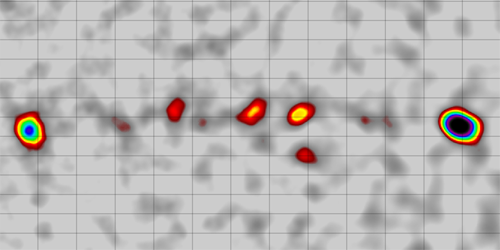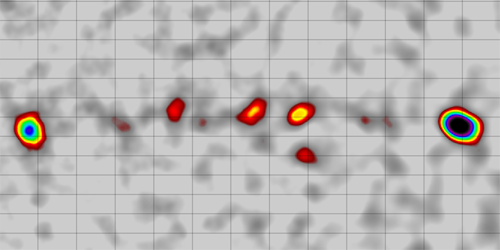A Catalog of High-Energy Gamma-Ray Sources
In 2019, astrophysicists observing the Crab Nebula detected the highest-energy photons ever seen—with energies above 100 TeV. Now, a collaboration running the High Altitude Water Cerenkov (HAWC) Observatory in Puebla, Mexico, has surveyed the sky to map out other similar high-energy-gamma-ray sources, revealing a total of nine. Such maps could help researchers understand the astrophysical origin of the most energetic particles and photons raining down on Earth from the cosmos.
Gamma rays are usually generated from accelerated charged particles, such as electrons or protons. But to produce 100-TeV photons, the particles’ energy has to be boosted by extremely powerful cosmic accelerators, with the leading candidates being supermassive black holes, supernova remnants, pulsars, and active galactic nuclei. There is still uncertainty, however, about the exact acceleration mechanisms. To elucidate them, researchers are aiming to detect more of the rare photons and trace them back to their sources.
HAWC detects gamma rays by observing showers of secondary particles produced when the rays hit the atmosphere. By measuring the secondary particles at numerous locations on the ground, the energy and arrival direction of the gamma rays can be inferred. The collaboration produced two maps of the sky—collecting only photons above 56 TeV and 100 TeV, respectively. The maps revealed nine sources above 56 TeV, three of which also emit above 100 TeV. The researchers say that all the sources are likely in our Galaxy, and they lie close to powerful pulsars, which suggests that the pulsar environment may be key to producing ultrahigh-energy emission.
This research is published in Physical Review Letters.
–Matteo Rini
Matteo Rini is the Deputy Editor of Physics.





